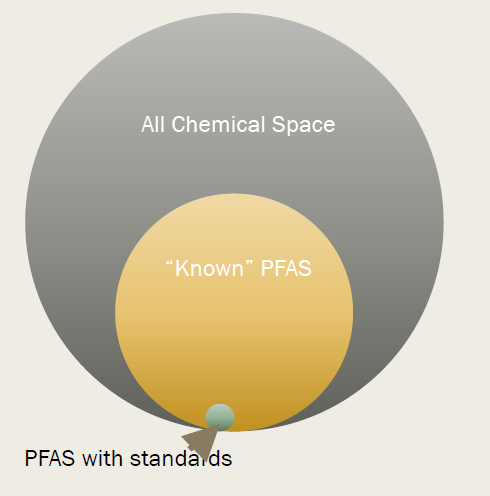Is It Safe To Incinerate Fluoropolymers?

The pilot-scale fluoropolymer incineration study conducted by the Karlsruhe Institute of Technology (KIT) represents a significant stride in understanding the environmental impact of fluoropolymer disposal.
Fluoropolymers’ End-of-Life
Fluoropolymers, high-performance plastics with strong carbon-fluorine (C-F) bonds, face scrutiny similar to non-polymeric PFASs like PFOA due to their lifecycle. Manufacturing these polymers requires the intentional use of concerning non-polymeric PFASs. Furthermore, worries emerge regarding their disposal. Manufacturers often use these polymers in small, intricate parts for specific applications, complicating their recovery and recycling. In the European Union, thermal destruction processes dispose of 83% of fluoropolymer waste.
You can also read: Fluoropolymers Life Cycle and PFAS Contamination
These processes need to achieve adequate temperatures for full mineralization. Failing to do so breaks down large fluoropolymer molecules into smaller, hazardous compounds that are water-soluble, bioavailable, bioaccumulative, mobile, and toxic.
Pilot-Scale Incineration
This study, carried out by the Karlsruhe Institute of Technology (KIT), explored the incineration of a mixture of major fluoropolymers. The conditions replicated those of European municipal waste combustors, offering essential data on the fate of fluoropolymers during incineration.
Researchers focused on four primary fluoropolymers (PTFE, PVDF, PFA, and FKM) which collectively account for over 80% of fluoropolymer production, reflecting a broad spectrum of the material’s market application. The incineration process was executed at varying temperatures and residence times, ensuring a comprehensive assessment of different combustion environments. The primary goals were to thoroughly examine the polymers’ total incineration and identify any toxic byproducts, especially PFAS.
During the experiments, researchers incinerated the fluoropolymers with common fuels such as natural gas and wood chips under controlled conditions. The researchers chose these settings to mimic real-world municipal and industrial waste incineration scenarios.
Fluoropolymers Mineralization
Researchers directly measured the emissions and residues at various stages and locations within the combustion system, ensuring a thorough analysis of the incineration byproducts. The techniques used were: gas chromatography coupled to mass spectrometry, ion chromatography, and combustion ion chromatography.
The study demonstrated that fluorine recoveries, reflecting fluoropolymer breakdown, varied between 69% and 84%, indicating efficient conversion to inorganic forms. Crucially, it found no detectable long-chain PFAS emissions during incineration, addressing key environmental safety concerns.
Non-Targeted Analysis and Standardization
While the Karlsruhe Institute of Technology (KIT) study contributes valuable insights into the incineration of fluoropolymers, measuring PFAS emissions is a complex challenge. The NISTIR 8399 study highlights significant variability in PFAS quantification across different laboratories, underscoring the inherent difficulties in measuring these substances accurately. Additionally, the absence of standardized methods for numerous PFAS compounds further complicates the assessment process.
Although, the four primary fluoropolymers (PTFE, PVDF, PFA, and FKM) considered in the study are significant, they represent only a segment of the vast spectrum of PFAS compounds. It is indeed feasible to accurately quantify known PFAS for which standards exist. However, the analytical scope is limited when it comes to unidentified PFAS or those without established measurement standards. Consequently, even though the study provides critical data on these four fluoropolymers, the broader universe of PFAS compounds remains only partially explored.
Comprehensive research expanding to more PFAS types, especially those without standard quantification methods, is vital for assessing fluoropolymer incineration’s safety and environmental impact.

NIST tools for the analysis of per- and poly-fluoroalkyl substances (PFAS). Courtesy of NIST.
Possible Waste Management
The pilot-scale fluoropolymer incineration findings suggest that, with proper management, incinerating fluoropolymers will not result in PFAS contaminating the environment. This demonstrates that disposing of fluoropolymer products, renowned for their durability and performance, in methods that comply with environmental safety and sustainability principles is indeed feasible. However, more research is necessary to confidently assert the safety of fluoropolymer incineration. It is necessary to assess other fluoropolymers. Such research should aim to standardize measurement techniques, address gaps in PFAS standards, and explore the full range of potential emissions, ensuring a thorough evaluation of environmental and health impacts.
The pilot-scale fluoropolymer incineration study marks a significant contribution to polymer waste management discussions, providing key data on fluoropolymer incineration. It highlights effective ways to reduce environmental risks from fluoropolymer disposal, aiding global sustainable polymer waste management.
To learn more about PFAS in the plastics industry, join SPE in Baltimore this October.
